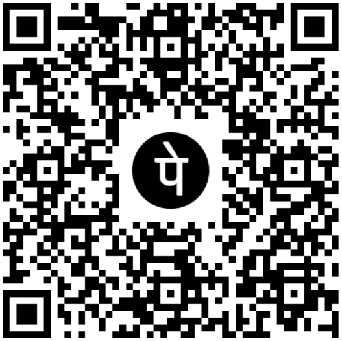Read more »
Dưới đây là bộ 20 câu trắc nghiệm đọc hiểu tiếng Anh chủ đề khác về Nhật Bản:
## 🌸 **Topic: Japanese Traditional Arts**
### 📖 **Passage: The Beauty of Japanese Traditional Arts**
Japan is famous for its rich traditional arts that have been preserved for centuries. These arts reflect Japan’s culture, history, and respect for nature. One important traditional art is **Ikebana**, the art of flower arranging. Ikebana is not just about putting flowers in a vase; it is a disciplined art form where every stem and leaf has meaning and balance.
Another well-known art is **Calligraphy**, the art of beautiful writing using brush and ink. Japanese calligraphy expresses the beauty of characters and the writer’s spirit. It requires years of practice and concentration.
**Tea ceremony**, or **Sado**, is a ritual of preparing and drinking tea. It emphasizes harmony, respect, purity, and tranquility. This ceremony is a way to appreciate the moment and the company.
Traditional Japanese arts continue to inspire both artists and people worldwide, connecting the past with the present.
---
### **Questions:**
1. What is Ikebana?
A. A tea ceremony
B. The art of flower arranging
C. A kind of painting
D. A music style
✅ **Answer: B**
2. Ikebana is:
A. Just putting flowers in a vase
B. A disciplined art with meaning and balance
C. A type of dance
D. A cooking style
✅ **Answer: B**
3. What does Japanese calligraphy use?
A. Pencil and paper
B. Brush and ink
C. Pen and marker
D. Chalk and board
✅ **Answer: B**
4. Calligraphy expresses:
A. The beauty of characters and the writer’s spirit
B. Only words
C. Random letters
D. Only numbers
✅ **Answer: A**
5. What does the tea ceremony emphasize?
A. Speed and hurry
B. Harmony, respect, purity, and tranquility
C. Loud talking
D. Eating food
✅ **Answer: B**
6. What is another name for the tea ceremony?
A. Ikebana
B. Sado
C. Calligraphy
D. Karaoke
✅ **Answer: B**
7. How long does it take to master Japanese calligraphy?
A. A few days
B. Years of practice
C. One week
D. No practice needed
✅ **Answer: B**
8. Traditional Japanese arts reflect:
A. Culture, history, and respect for nature
B. Only modern trends
C. Technology only
D. No connection to history
✅ **Answer: A**
9. Ikebana is about:
A. Random flower placement
B. Meaning and balance
C. Eating flowers
D. Writing flowers
✅ **Answer: B**
10. Tea ceremony is a way to:
A. Appreciate the moment and the company
B. Drink coffee
C. Make food
D. Dance
✅ **Answer: A**
11. Which traditional art involves brush and ink?
A. Ikebana
B. Calligraphy
C. Tea ceremony
D. Origami
✅ **Answer: B**
12. Japanese traditional arts connect:
A. The past with the present
B. Only the future
C. Only the past
D. Nothing
✅ **Answer: A**
13. What is NOT part of the tea ceremony’s emphasis?
A. Harmony
B. Respect
C. Purity
D. Loud noise
✅ **Answer: D**
14. Ikebana is considered:
A. A simple hobby
B. A disciplined art form
C. A sport
D. A type of music
✅ **Answer: B**
15. The beauty of Japanese calligraphy lies in:
A. The writer’s spirit and the characters
B. Speed of writing
C. The color of the paper
D. The size of the brush
✅ **Answer: A**
16. What does Sado mean?
A. Flower arranging
B. Tea ceremony
C. Calligraphy
D. A festival
✅ **Answer: B**
17. Which of these is a Japanese traditional art?
A. Sushi making
B. Ikebana
C. Karate
D. Judo
✅ **Answer: B**
18. The tea ceremony promotes:
A. Tranquility
B. Competition
C. Loud music
D. Fast eating
✅ **Answer: A**
19. Traditional Japanese arts are:
A. Only interesting for old people
B. Inspiring artists worldwide
C. Unknown outside Japan
D. Not respected
✅ **Answer: B**
20. The main focus of Ikebana is:
A. Colors only
B. Meaning and balance of flowers
C. Size of flowers
D. Number of flowers
✅ **Answer: B**
- Tổng thống Ukraine Zelensky gây chú ý khi mặc vest để gặp ông Trump
- Giay in Bill Nha Trang ☎️ Hotline: 0868.740.457
- Kình ngư Ánh Viên cùng hơn 800 vận động viên bơi trên vịnh Nha Trang
- Ca canh Mun, molly, buom 10K…40 Ngo Den THap Ba Nha Trang. 0899 364 925
- SỰ ĐAU KHỔ TRONG CON ĐƯỜNG HỌC TẬP VÀ THI CỬ: MỘT CÁI NHÌN TRIẾT LÝ, TÂM LÝ VÀ GIÁO DỤC
- “Hotel California” – Ẩn dụ về sự mê lầm, cám dỗ và hành trình thoát khỏi ngục tù tâm thức
- Hotel California – Khi con người bị mắc kẹt trong chính giấc mơ Mỹ
- Hotel California và khổ hạnh đầu đà của Sư Minh Tuệ
- HOTEL CALIFORNIA VÀ HÀNH TRÌNH CUỘC ĐỜI: HỌC HÀNH, LÀM VIỆC – NHỮNG ẢO TƯỞNG KHÔNG LỐI THOÁT
- Hotel California và The Matrix: Hành Trình Giải Thoát Trong Mê Cung Tri Giác
















0 Reviews